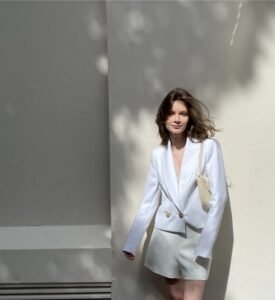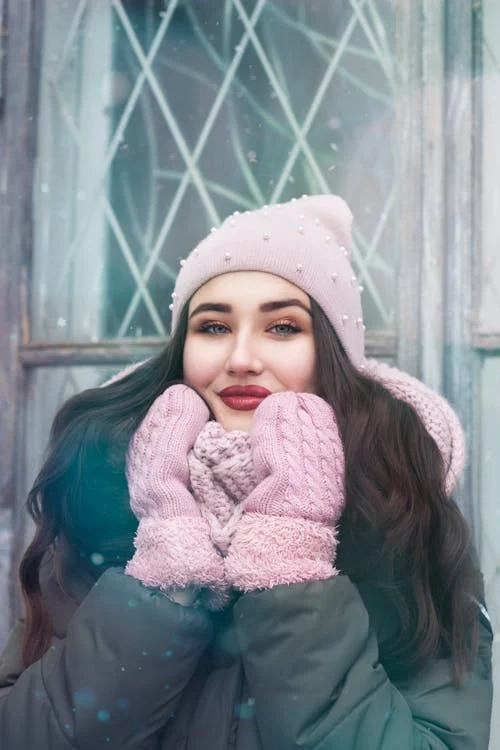Fashion is one of the most dynamic industries, constantly evolving to reflect societal changes, technological advances, and cultural shifts. In the current generation, we see a seamless blending of sustainability, technology, nostalgia, and individualism. From influencers shaping the way we dress to brands embracing innovative ways to produce and market clothing, the fashion landscape is experiencing dramatic transformations. This blog post will explore the latest trends in clothing that define the fashion world of today.
1. Sustainability and Ethical Fashion

As environmental concerns continue to grow, sustainability has become one of the most prominent trends in the fashion industry. The modern consumer is becoming more conscious of the environmental impact of their clothing choices, and as a result, sustainability is a driving force in fashion. Sustainable fashion not only focuses on environmentally friendly materials but also on ethical manufacturing practices, with a focus on fair wages and working conditions for laborers.
Key sustainable trends in clothing include:
Eco-friendly Materials:

Fabrics made from organic cotton, bamboo, hemp, recycled polyester, and innovative materials like mushroom leather and algae-based fabrics are gaining popularity. These materials reduce environmental impact by consuming fewer resources and emitting fewer greenhouse gases compared to traditional fabrics.
Upcycling and Recycling:

Upcycling is the process of repurposing old clothes into new garments, while clothing recycling involves converting worn garments into new textiles. Brands like Patagonia and Stella McCartney have championed the cause, pushing for circular fashion in which products are designed for longevity, reuse, and recyclability.
Slow Fashion:

Slow fashion contrasts sharply with fast fashion. Instead of mass-producing cheap, low-quality garments for immediate sale, slow fashion emphasizes well-made, timeless pieces that consumers will cherish for years. Consumers are being encouraged to buy less but invest in higher quality, longer-lasting clothing.
2. Gender Fluidity and Inclusivity

Fashion today has become more inclusive, embracing diversity in all its forms. The boundaries of gendered clothing are being blurred as designers and brands continue to embrace gender fluidity. The past few years have seen a shift away from binary concepts of masculinity and femininity in clothing, with more brands designing unisex or gender-neutral collections.
Some key trends in this space include:
Unisex Fashion:

Clothing items like oversized shirts, sweatshirts, trousers, and sneakers are now designed to be worn by anyone, regardless of gender. Major brands like Telfar, Balenciaga, and Gucci are leading the charge in promoting gender-neutral styles.
Body Positivity and Size Inclusivity:

The fashion industry is embracing body diversity like never before. Models of all sizes, ethnicities, and backgrounds are being showcased on runways, and fashion brands are offering a wider range of sizes. Companies like Savage X Fenty by Rihanna and Aerie have set new standards in inclusivity, empowering customers to embrace their body type.
Adaptive Fashion:

Clothing designed for people with disabilities is an essential growing trend. Brands like Tommy Hilfiger and ASOS have begun offering adaptive clothing lines that are stylish, practical, and designed with features like magnetic closures, adjustable waistbands, and easy-to-wear silhouettes.
3. Technological Integration: Smart Clothing and Digital Fashion

Technology is increasingly becoming a key player in the fashion world. From smart textiles to virtual clothing, technology is allowing us to rethink the possibilities of fashion.
Smart Clothing:

Smart garments are clothing items embedded with technology, such as sensors or conductive fibers, that allow them to perform a function beyond mere aesthetics. For instance, clothing that can monitor heart rate, temperature, or even provide UV protection has been developed by companies like Under Armour and Athos.
Virtual Fashion:

With the rise of virtual worlds and augmented reality (AR), virtual fashion is emerging as a trend. Brands like The Fabricant are creating entirely digital garments that exist only in virtual spaces. These digital designs can be worn in online games, on social media platforms, or during virtual meetings. This trend aligns with the growing interest in the metaverse, where users can create digital avatars and dress them in virtual clothes.
3D-Printed Clothing:

Advances in 3D printing technology have allowed designers to create intricate garments in unconventional materials like plastic, metal, and fabric blends. Designers like Iris van Herpen are at the forefront of integrating 3D printing into fashion to push the boundaries of design and construction.
4. Athleisure and Comfortable Chic

Comfort has become a major priority in fashion, and this shift is evident in the rise of athleisure. Blending activewear with everyday casual clothing, athleisure has been a defining trend in recent years. Think leggings, oversized sweatshirts, stylish sneakers, and bike shorts—clothing that works both for a workout and for lounging or running errands.
Athleisure is driven by:
Function Meets Fashion:

Modern athleisure is not just about comfort—it’s also about style. Brands like Lululemon, Nike, and Gymshark have made athletic wear a staple in both fitness routines and daily wardrobes. These garments come in sleek designs, bold colors, and innovative materials that allow for flexibility and movement without compromising style.
Sustainable Athleisure:

Athleisure brands are also leaning into sustainability, creating high-performance fabrics that are eco-friendly. Recycled polyester, for instance, is often used in leggings, sports bras, and jackets.
5. Nostalgia and Vintage Revival

Fashion is often cyclical, with trends from the past making a comeback. Nostalgia has played a huge role in shaping fashion choices for this generation. Retro styles from the ’90s, 2000s, and even earlier decades are resurfacing, influencing everything from streetwear to high fashion.
Y2K Fashion:

The Y2K (Year 2000) era is making a significant comeback, with trends like low-rise jeans, baby tees, and chunky sneakers being revived. This trend is fueled by Gen Z’s fascination with early-2000s pop culture, and celebrities like Bella Hadid and Hailey Bieber have been spotted wearing nostalgic Y2K outfits.
Vintage and Thrifted Clothing:

Thrifting and vintage shopping are not only environmentally conscious but also a way to curate unique and one-of-a-kind styles. Online platforms like Depop and Poshmark make it easier to buy and sell vintage clothing, and sustainability-conscious millennials and Gen Z shoppers are leading this movement.
Streetwear Influence:

Streetwear continues to dominate the fashion scene. Brands like Supreme, Off-White, and Balenciaga draw inspiration from ‘90s and early 2000s hip-hop culture, skate fashion, and graffiti art. This fusion of nostalgia and modernity speaks to the youth’s desire for authenticity and self-expression.
6. Bold Colors and Patterns

Fashion today is embracing boldness. Bright colors, oversized silhouettes, and eye-catching patterns have become central to contemporary style. These trends reflect the mood of a generation that wants to make a statement and stand out.
Bold Colors:

Vibrant colors like neon greens, pinks, yellows, and electric blues are making waves. Designers like Versace and Prada have been showcasing collections full of strong, bold colors, signaling a break from the more subdued tones of the past.
Patterns and Prints:

From animal prints to psychedelic swirls, bold patterns are a key element of modern fashion. Mixing and matching patterns is becoming increasingly popular, and many streetwear and high-fashion collections now incorporate clash prints, oversized checks, and graphic designs.
Tie-Dye and Graphic Tees:

The resurgence of tie-dye in casual wear, particularly during the pandemic, brought a sense of fun and DIY creativity to fashion. Graphic tees, often sporting nostalgic logos or art prints, remain a staple in casual streetwear.
7. The Return of High Fashion and Couture

While casual and comfortable clothing reigns in many everyday situations, high fashion is making a comeback in a big way. As people return to in-person events and experiences, there is a renewed demand for luxury and couture.
Red Carpet Glamour:

Celebrities wearing couture gowns on the red carpet are once again sparking a renewed interest in glamorous, high-fashion clothing. Designers like Valentino, Chanel, and Dior continue to create show-stopping pieces that exude luxury and elegance.
Fashion as Art:

High fashion today is increasingly seen as an art form, with designers focusing not only on wearability but also on creative expression. Couture collections are more about experimentation, with avant-garde designs pushing the boundaries of what clothing can represent.
The fashion trends of today reflect the values and attitudes of the current generation: a blend of environmental consciousness, inclusivity, and individuality. Clothing is no longer just about appearance; it’s about self-expression, ethical practices, and technological innovation. Whether it’s the rise of gender-neutral fashion, the integration of smart clothing, or the nostalgia-driven Y2K revival, the fashion world is continuously shifting, driven by consumer demand for both style and substance.
As fashion continues to evolve, the latest trends show that the industry is becoming more diverse, creative, and sustainable—allowing for more personalized, thoughtful choices that resonate with our values. The future of fashion holds exciting possibilities, where style meets purpose, and clothing becomes a canvas for personal expression.



